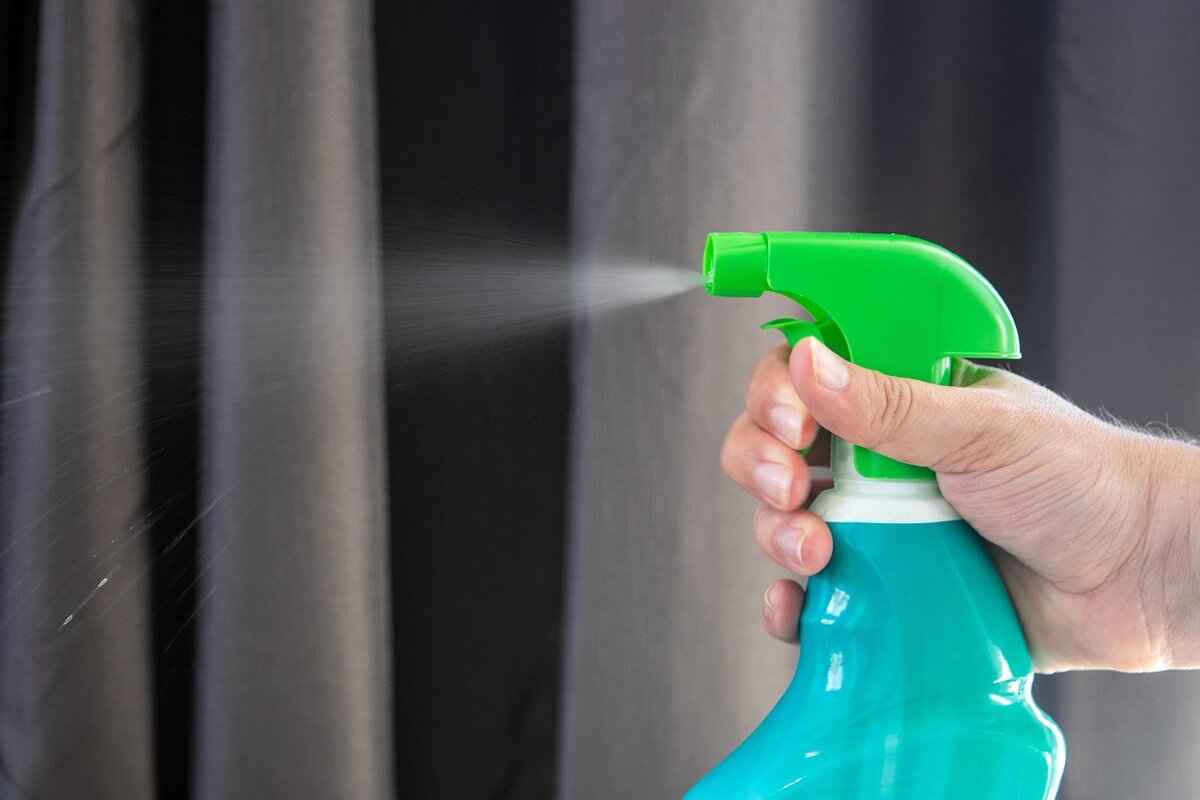This article explores effective methods for removing window tint residue from various surfaces. It provides practical tips, tools, and techniques to ensure a clean finish without damaging the glass or surrounding materials.
Understanding Window Tint Residue
Window tint residue is the stubborn adhesive left behind after the removal of window film. This residue can be particularly challenging to deal with, as it may bond strongly to the glass surface. Understanding the nature of this residue is essential for selecting the appropriate removal method. Typically, the residue consists of adhesive that can be influenced by factors such as the quality of the tint and the environmental conditions during installation.
Common Causes of Window Tint Residue
- Low-Quality Tint Films: The use of inferior tint films often leads to excessive residue upon removal. These films may use adhesives that degrade over time, leaving behind a sticky mess.
- Environmental Factors: Heat and humidity can exacerbate adhesion, causing the tint to bond more strongly to the glass. Understanding these factors is crucial for timing your removal efforts.
- Improper Installation: Incorrect installation techniques can lead to increased residue. Ensuring that the film is applied correctly can help minimize future issues.
Essential Tools for Removal
Having the right tools is vital for effectively removing window tint residue. Some of the essential tools include:
- Scrapers and Blades: A good quality scraper helps in removing residue without scratching the glass. Choose a scraper designed specifically for glass surfaces.
- Heat Guns and Steamers: These tools can soften the adhesive, making it easier to scrape off. Always use them carefully to avoid damaging the glass.
Step-by-Step Guide to Removing Window Tint Residue
Following a systematic approach can simplify the removal process:
- Preparing the Area: Clear the workspace and protect surrounding surfaces to prevent accidental damage.
- Applying Heat: Gently apply heat to the tinted area to loosen the adhesive. This step is crucial for making scraping easier.
- Scraping the Residue: Carefully use the scraper to remove the loosened residue. Take your time to avoid scratches.
- Cleaning the Glass: After scraping, clean the glass thoroughly to remove any remaining adhesive or debris, ensuring a clear finish.
Alternative Methods for Stubborn Residue
For particularly stubborn residues, alternative methods may be necessary:
- Using Adhesive Removers: Specialized adhesive removers can effectively break down tough residue. Follow the manufacturer’s instructions for safe application.
- Homemade Solutions: Solutions like vinegar or rubbing alcohol can also be effective. Mix equal parts with water and apply to the residue for best results.
Preventing Window Tint Residue in the Future
To avoid future issues with window tint residue, consider the following tips:
- Selecting Quality Tint: Invest in high-quality films that are less likely to leave residue. Look for reputable brands with good reviews.
- Professional Installation Options: Hiring professionals for installation can ensure that the tint is applied correctly, reducing the risk of residue.
When to Seek Professional Help
In some cases, seeking professional assistance may be the best option:
- Severe Residue Buildup: If the residue is extensive, professionals can help remove it without risking damage to the glass.
- Specialized Glass Treatments: Certain treatments may require specialized knowledge for proper removal. Consulting experts can ensure the best results.

Understanding Window Tint Residue
Window tint residue is often an overlooked aspect when it comes to the removal of window films. This residue consists of the adhesive remnants that remain on the glass after the film has been removed. Understanding its composition and characteristics is crucial for selecting the right removal method, ensuring a smooth and effective process.
The adhesive used in window tint films can vary significantly in quality and formulation. Typically, high-quality tints utilize advanced adhesives that provide a strong bond while being easier to remove without leaving residue. In contrast, lower-quality films often employ inferior adhesives that can break down over time, leading to increased residue and a more challenging removal process.
One of the primary characteristics of window tint residue is its stickiness. Depending on the age of the tint and the environmental conditions it has been exposed to, the residue can range from mildly tacky to extremely stubborn. Factors such as heat, humidity, and UV exposure can exacerbate the adhesion, making it more difficult to clean off the glass surface.
Moreover, the type of glass can also influence how residue adheres. For instance, textured or frosted glass surfaces may trap more adhesive compared to smooth, polished glass. This makes understanding the surface type essential when planning for removal.
- Heat Sensitivity: Adhesives that become more pliable when heated can be easier to remove. Conversely, those that harden with heat can pose additional challenges.
- Environmental Impact: Humidity can cause adhesives to bond more aggressively with glass, complicating the removal process.
- Time Factor: The longer the tint has been applied, the more difficult it may be to remove the residue.
In summary, understanding the nature of window tint residue is essential for effective removal. Recognizing the factors that contribute to its formation can help in selecting the appropriate methods and tools for a successful removal process. Whether you are a DIY enthusiast or a professional, being informed about the characteristics of window tint residue will save time and effort in achieving a clean finish.

Common Causes of Window Tint Residue
Window tinting is a popular choice for enhancing privacy, reducing glare, and protecting interiors from UV damage. However, many individuals encounter the frustrating issue of window tint residue after attempting to remove the film. Understanding the common causes of this residue can help prevent future problems and ensure a smoother removal process.
- Quality of the Tint Film: The quality of the window tint film plays a crucial role in the amount of residue left behind. Low-quality films often utilize inferior adhesives that do not adhere properly to the glass. When these films are removed, they tend to leave behind a sticky residue that is difficult to eliminate. Investing in high-quality tint films can significantly reduce the chances of encountering this issue.
- Adhesive Properties: Different adhesives have varying strengths and compositions. Some adhesives are designed to bond strongly with glass surfaces, making them more challenging to remove. Over time, exposure to heat and sunlight can cause these adhesives to break down, leading to increased residue. Understanding the adhesive properties of the tint you choose can help in selecting a product that minimizes residue.
- Environmental Conditions: Environmental factors such as heat, humidity, and sunlight exposure can impact the performance of window tint adhesives. High temperatures can cause adhesives to soften, while excessive humidity can lead to a stronger bond between the film and the glass. Being aware of these conditions can help you plan the removal process more effectively.
- Improper Installation: The installation process is critical in determining how much residue will be left behind. If the film is not applied correctly, air bubbles or creases can form, which may lead to uneven adhesive distribution. This can result in areas where the adhesive adheres more strongly, leaving behind residue when the film is removed. Ensuring a professional installation can help mitigate this issue.
- Age of the Tint: Over time, window tint films can degrade due to prolonged exposure to environmental factors. Older tint films may become brittle and break down, leading to increased residue upon removal. Regular maintenance and timely replacement of old tint can help prevent this problem.
By understanding these common causes of window tint residue, you can make informed decisions regarding the products you choose and the methods you employ for removal. Taking preventive measures, such as selecting high-quality films and ensuring proper installation, can greatly enhance your experience with window tinting and reduce the likelihood of encountering residue issues in the future.
Low-Quality Tint Films
When it comes to window tinting, the quality of the film plays a crucial role in the overall performance and longevity of the application. are often made from inferior materials and adhesives that can lead to a host of problems, particularly when it comes time to remove the tint. Understanding the implications of using these films can help consumers make informed decisions and avoid potential headaches down the road.
Investing in high-quality tint films can save you time, money, and frustration. Unlike their low-quality counterparts, premium films are designed to last longer and provide better UV protection, heat rejection, and glare reduction. Additionally, they are less likely to leave behind excessive residue upon removal, making the process much smoother.
Recognizing low-quality tint films is essential for making a wise purchase. Here are some characteristics to look out for:
- Poor Adhesive Quality: Low-quality films often use cheap adhesives that break down over time, leading to residue.
- Inconsistent Color: Cheap films may have uneven coloration, which can affect aesthetics.
- Thin Material: Low-quality films are often thinner, making them more susceptible to scratches and tears.
- Limited Warranty: Reputable brands usually offer warranties that reflect the film’s durability; low-quality films often come with minimal or no warranty.
Using low-quality tint films can lead to several issues:
- Excessive Residue: As mentioned earlier, the adhesive used in low-quality films tends to break down, resulting in a sticky mess that can be difficult to clean.
- Increased Heat and Glare: Many low-quality films do not provide adequate heat rejection or glare reduction, negating the benefits of tinting.
- Fading and Discoloration: Inferior films are more likely to fade over time, which can detract from the appearance of your vehicle or home.
To avoid the pitfalls of low-quality tint films, consider the following tips:
- Research Brands: Look for reputable manufacturers with positive reviews and a history of quality products.
- Ask for Samples: If possible, request samples to assess the film’s quality before making a purchase.
- Consult Professionals: Seek advice from professionals who can recommend high-quality options based on your specific needs.
In conclusion, understanding the differences in tint quality is essential for making better purchasing decisions. By investing in high-quality tint films, you can avoid excessive residue and other issues that come with low-quality alternatives. This knowledge not only enhances your experience but also ensures that your investment lasts longer and performs better.
Characteristics of Poor Quality Films
When it comes to window tinting, the quality of the film plays a crucial role in determining both its performance and longevity. Poor quality films are often made with inferior materials and adhesives, resulting in a range of issues that can affect their appearance and functionality over time.
One of the primary characteristics of low-quality window films is the use of inferior adhesives. These adhesives may not be designed to withstand prolonged exposure to sunlight and temperature fluctuations, leading to a breakdown of the adhesive bond over time. As the adhesive deteriorates, it can leave behind a sticky residue that is difficult to remove, making the removal process more tedious and time-consuming.
Additionally, poor quality films often lack the necessary UV protection. This can lead to fading and discoloration of both the film and the interior of the vehicle or building. Over time, this can result in an unappealing appearance and may even affect the resale value of the vehicle or property.
- Bubble Formation: Low-quality films are prone to bubble formation during installation or over time. These bubbles can create an unsightly appearance and may obstruct visibility.
- Peeling Edges: Films that are not properly manufactured or installed may begin to peel at the edges, further compromising their effectiveness and aesthetic appeal.
- Inconsistent Tinting: Poorly made films may exhibit uneven coloring or tinting, which can detract from the overall look and feel of the glass.
Another important aspect to consider is the environmental impact of low-quality films. Many cheaper options are made from non-recyclable materials, contributing to environmental waste. Investing in higher quality films not only benefits the user in terms of durability and aesthetics but also supports sustainable practices.
Learning to identify these poor quality films can save both time and effort in the long term. By recognizing the signs of inferior products, consumers can make informed decisions when purchasing window films, ensuring they choose options that will not only enhance their space but also withstand the test of time.
In conclusion, understanding the characteristics of poor quality films is essential for anyone considering window tinting. By prioritizing quality, individuals can avoid the pitfalls associated with lower-grade products and enjoy the benefits of durable, effective window films.
Environmental Factors
When it comes to removing window tint, play a crucial role in the effectiveness of the adhesive used in the tinting process. Among these factors, heat and humidity are the most significant, as they can dramatically influence how well the adhesive bonds to the glass surface. Understanding these factors is essential for anyone planning to remove window tint, as they can affect the removal process and the tools needed for a successful outcome.
Heat can enhance the performance of adhesives. When exposed to high temperatures, the adhesive tends to become more pliable, making it easier to scrape off the residue. This is particularly useful when using tools like heat guns or steamers, which can effectively soften the adhesive layer. The increased temperature reduces the bond strength between the adhesive and the glass, facilitating a smoother removal process. However, it’s important to apply heat carefully to avoid damaging the glass or the vehicle’s interior.
On the other hand, humidity can also impact adhesive performance, often causing it to bond more strongly to the glass. In high-humidity environments, the moisture can infiltrate the adhesive layer, leading to a stronger bond as the adhesive absorbs water. This can make the removal process more challenging, requiring additional effort and possibly more advanced tools to break the bond effectively. Therefore, understanding the humidity levels in your area can help in planning the removal process, as it may require waiting for drier conditions or employing alternative methods.
Additionally, the quality of the adhesive used in the window tint can vary significantly. Low-quality adhesives are often more susceptible to environmental factors, leading to increased residue and more difficulty during removal. Conversely, high-quality adhesives may offer better performance, but they can also become more challenging to remove under extreme environmental conditions. Thus, it is crucial to consider the type of tint applied when planning for removal.
In summary, heat and humidity are key environmental factors that influence the adhesive’s performance in window tinting. Understanding these factors can significantly aid in planning the removal process. By taking into account the temperature and humidity levels, as well as the quality of the adhesive used, individuals can choose the most effective methods and tools for successfully removing window tint residue.
Proper Installation Techniques
When it comes to window tinting, the importance of cannot be overstated. Incorrect installation can lead to increased residue, which complicates the removal process later on. By understanding and applying the right techniques, you can significantly minimize residue and ensure a smoother future removal.
One of the primary reasons for residue buildup is the quality of the installation process. If the film is not applied correctly, it can bond too tightly to the glass, making future removal a challenge. Here are some essential techniques to consider:
- Surface Preparation: Before applying window tint, ensure that the glass surface is thoroughly cleaned. Use a high-quality glass cleaner to remove any dust, dirt, or grease. This step is crucial because any contaminants can interfere with the adhesive’s effectiveness.
- Humidity and Temperature Control: The environment plays a significant role in the installation process. Ideal conditions include low humidity and moderate temperatures. High humidity can cause the adhesive to activate prematurely, while extreme temperatures can affect its curing process.
- Use of Proper Tools: Using the right tools is essential for a successful installation. A quality squeegee helps eliminate air bubbles, ensuring a smooth application. Additionally, a utility knife is necessary for trimming excess film accurately.
- Techniques for Application: When applying the film, start from one edge and gradually work your way across the glass. Use a squeegee to push out air bubbles and excess water. This technique helps prevent trapping moisture, which can lead to residue.
- Allowing for Curing Time: After installation, it’s vital to allow the film to cure properly. This period can vary depending on the type of film and environmental conditions. Avoid rolling down windows or exposing the film to extreme conditions during this time.
By following these installation techniques, you can ensure that the window tint adheres properly without excessive residue. Additionally, investing in high-quality films can further reduce the likelihood of encountering residue during removal. Remember, a well-executed installation not only enhances the appearance of your vehicle or property but also makes future maintenance much easier.
In conclusion, understanding the significance of proper installation techniques is paramount for anyone considering window tinting. By taking the time to prepare the surface, control environmental factors, and utilize the right tools, you can minimize residue and ensure a clean finish. This proactive approach will save you time, effort, and potential headaches when it’s time to remove the tint in the future.

Essential Tools for Removal
Removing window tint residue can be a challenging task, but having the right tools can make the process significantly easier and more effective. This section highlights the essential tools you will need, along with their specific uses, to ensure a successful removal process.
- Scrapers and Blades: A high-quality scraper is one of the most vital tools for removing window tint residue. Look for a scraper with a stainless steel blade to prevent rusting and ensure durability. When using a scraper, it’s crucial to hold it at a low angle against the glass to minimize the risk of scratches. Additionally, using a plastic scraper can help protect the glass surface while effectively removing the residue.
- Heat Guns and Steamers: These tools are incredibly effective in softening the adhesive that holds the window tint in place. A heat gun works by blowing hot air onto the tinted area, making the adhesive pliable. Alternatively, a steamer can be used to introduce moisture and heat, which can also help loosen stubborn residue. When using either tool, be cautious to avoid overheating the glass, which can cause it to crack.
- Adhesive Removers: Specialized adhesive removers can be a game changer when dealing with particularly stubborn residues. Look for products that are specifically designed for window tint removal, as they are formulated to break down adhesives without damaging the glass. Always follow the manufacturer’s instructions and test a small area first to ensure compatibility with your glass.
- Microfiber Cloths: After scraping and using adhesive removers, a clean microfiber cloth is essential for wiping down the glass. These cloths are designed to trap dust and debris without scratching the surface, leaving your windows spotless. They are also reusable and can be washed for multiple uses.
- Protective Gear: Safety should always be a priority. Wearing gloves can protect your hands from harsh chemicals found in adhesive removers, while safety goggles can shield your eyes from any debris that may fly during the scraping process.
By equipping yourself with these essential tools, you can streamline the window tint residue removal process, ensuring a clean and clear finish. Always remember to take your time and follow the steps carefully for the best results.
Scrapers and Blades
When it comes to removing window tint residue, choosing the right scraper is essential. The type of scraper you use can greatly influence the efficiency of the removal process and the condition of the glass afterward. Using the wrong scraper can lead to scratches, chips, or other damage, which is why understanding the different options available is crucial.
There are several types of scrapers that can be used for this purpose:
- Plastic Scrapers: These are ideal for delicate surfaces like glass. They are less likely to cause scratches and are effective in removing adhesive without damaging the glass.
- Metal Scrapers: While they can be more effective in removing stubborn residue, they carry a higher risk of scratching the glass. If you opt for a metal scraper, use it with caution and at a low angle to minimize potential damage.
- Multi-Edge Scrapers: These scrapers come with interchangeable blades, allowing you to switch between different types based on the residue’s toughness. This versatility can be particularly useful for various surfaces.
In addition to selecting the right scraper, the technique you employ is equally important. Here are some tips for effective scraping:
1. Angle of Scraping: Hold the scraper at a low angle (around 30 degrees) to the glass to avoid scratches.2. Gentle Pressure: Apply gentle pressure while scraping to avoid damaging the glass. Use a back-and-forth motion for better results.3. Heat Application: Before scraping, consider using a heat gun or steamer to soften the adhesive, making it easier to remove.4. Clean Regularly: Periodically clean the scraper blade to prevent residue buildup, which can lead to scratches.
It’s also vital to consider the condition of the scraper before use. A dull blade can increase the risk of damage to the glass and make the removal process more labor-intensive. Regularly check and replace blades as necessary to maintain efficiency.
Furthermore, using a razor blade can be effective for tougher residues, but it requires a steady hand and experience to avoid scratching. For those who are inexperienced, it may be wise to practice on a less visible area first.
In conclusion, selecting the appropriate scraper and employing effective techniques can significantly enhance your ability to remove window tint residue safely and efficiently. By prioritizing the right tools and methods, you can ensure a clean and damage-free finish.
Heat Guns and Steamers
When it comes to removing window tint residue, heat guns and steamers are invaluable tools that can significantly simplify the process. These devices work by applying heat to the adhesive, which softens it and makes it easier to scrape off without damaging the underlying surface. However, using these tools requires a clear understanding of their operation to ensure safety and effectiveness.
Heat guns operate by blowing hot air at high temperatures, typically ranging from 100°F to 1,200°F. This intense heat can quickly soften the adhesive, allowing for easier removal. On the other hand, steamers utilize steam to achieve a similar effect, providing a gentler approach that can be particularly beneficial for more delicate surfaces. Both tools can be effective, but they come with their own sets of advantages and precautions.
To use a heat gun safely, always keep it moving to avoid overheating any one spot. This can prevent potential damage to the glass or surrounding materials. It is also crucial to wear protective gear, such as gloves and safety goggles, to guard against burns or splashes of hot adhesive. Start by setting the heat gun to a low setting and gradually increase the temperature as needed. Aim the nozzle at the tinted area from a distance of about 6 inches, and move it back and forth to evenly distribute the heat.
In contrast, steamers can be easier to control and are less likely to cause damage. When using a steamer, hold the nozzle about an inch away from the surface and move it slowly across the area. The steam will penetrate the adhesive, loosening it and making it easier to scrape off. It is essential to work in small sections and allow the steam to work its magic before attempting to scrape.
Regardless of the tool you choose, always test a small area first to determine how the adhesive reacts to heat or steam. This precaution can help you avoid any unexpected damage to the glass or the surrounding materials. After the adhesive has softened, use a plastic scraper or a razor blade at a low angle to gently lift the residue from the surface. Be careful not to apply too much pressure, as this can scratch the glass.
In summary, both heat guns and steamers are effective for removing window tint residue, but they must be used with caution. Understanding how to operate these tools safely and effectively is crucial for achieving the best results while minimizing the risk of damage. By following proper techniques and safety measures, you can ensure a successful removal process.

Step-by-Step Guide to Removing Window Tint Residue
Removing window tint residue can seem daunting, but a systematic approach simplifies the process significantly. This guide provides a detailed, step-by-step method to ensure a thorough and efficient removal, allowing you to achieve a clean finish without damaging the glass or surrounding materials.
- Preparing the Area: Before beginning the removal process, it is essential to prepare your workspace. Clear the area of any obstacles and ensure that you have all necessary tools at hand. Protect surrounding surfaces with drop cloths or newspaper to prevent accidental damage during the removal process.
- Applying Heat: Heat is a crucial element in loosening the adhesive that holds the window tint in place. Use a heat gun or steamer to gently warm the tinted area. Be careful not to overheat, as excessive heat can damage the glass or surrounding materials. Move the heat source in a circular motion to evenly distribute the warmth.
- Scraping the Residue: Once the adhesive has softened, use a scraper or razor blade to carefully remove the residue. Hold the scraper at a low angle to minimize the risk of scratching the glass. Start from one corner and work your way across the surface. If you encounter stubborn areas, reapply heat to help loosen the adhesive further.
- Cleaning the Glass: After scraping off the residue, it’s essential to clean the glass thoroughly. Use a glass cleaner or a mixture of vinegar and water to wipe down the surface. This step removes any remaining adhesive particles and ensures a clear, streak-free finish. A microfiber cloth is recommended for this task, as it is gentle on glass surfaces.
- Inspecting for Residue: After cleaning, inspect the glass for any remaining residue. If you notice any stubborn spots, you may need to repeat the heating and scraping process. For particularly challenging areas, consider using an adhesive remover specifically designed for window films.
In addition to these steps, it is vital to take precautions throughout the process. Always wear protective gloves and eyewear to safeguard against any sharp edges or chemicals. Working in a well-ventilated area is also recommended, especially when using adhesive removers or cleaning solutions.
By following this systematic approach, you can simplify the removal of window tint residue, ensuring a clean and smooth glass surface. Each step is designed to be straightforward, allowing both novices and experienced individuals to achieve excellent results without the need for professional assistance. Remember, patience is key; take your time to ensure that every step is completed thoroughly for the best outcome.
Preparing the Area
Before embarking on the window tint removal process, proper preparation of the workspace is crucial. This step not only enhances efficiency but also minimizes the risk of accidental damage to surrounding surfaces and materials. Here’s a detailed guide on how to effectively prepare your area for this task.
- Clear the Workspace: Begin by removing any items that may obstruct your work. This includes furniture, decorations, and any tools that are not necessary for the removal process. A clear area allows for better movement and reduces the chance of accidents.
- Protect Surrounding Surfaces: Use drop cloths, old sheets, or plastic coverings to shield floors and adjacent surfaces. This precaution is vital, as adhesive residue can be challenging to remove from carpets or wooden floors.
- Gather Necessary Tools: Assemble all the tools you will need for the removal process beforehand. This includes scrapers, heat guns, adhesive removers, and cleaning cloths. Having everything within reach allows for a smoother workflow.
- Ensure Adequate Lighting: Good lighting is essential for spotting residue and ensuring thorough cleaning. If the natural light is insufficient, consider using portable work lights to illuminate the area.
- Ventilation: If you plan to use chemical adhesive removers, ensure the area is well-ventilated. Open windows and doors to allow fresh air circulation, which is crucial for safety when using potentially harmful substances.
Why is Preparation Important?Preparing the area is not just a matter of convenience; it significantly impacts the quality of the outcome. By taking the time to set up your workspace properly, you minimize the risk of damaging your windows or surrounding materials. Moreover, a well-prepared area allows you to focus on the task at hand without distractions, leading to a more efficient removal process.
Tips for Effective Preparation– **Plan Your Workflow:** Consider the order in which you will work. For instance, if you are removing tint from multiple windows, start with the one that is most accessible to avoid unnecessary movement.- **Check the Weather:** If you are working outdoors, check the weather conditions. High humidity or rain can affect the adhesive’s performance, making the removal process more difficult.- **Wear Protective Gear:** It’s advisable to wear gloves and safety goggles to protect yourself from any adhesive residues or chemicals you may encounter during the process.
In conclusion, taking the time to prepare your workspace effectively can make a significant difference in the ease and success of your window tint removal project. By following these guidelines, you can ensure a smoother process and achieve better results.
Applying Heat
When it comes to removing window tint residue, one of the most effective techniques involves to the tinted area. This process is essential for loosening the adhesive that binds the tint to the glass, making the subsequent scraping process significantly easier and more efficient. In this section, we will delve into the methods and benefits of using heat, as well as safety precautions to consider.
Heat plays a crucial role in the adhesive removal process. The application of heat increases the temperature of the adhesive, causing it to soften. This softening effect reduces the bond strength between the adhesive and the glass surface, allowing for easier removal. Heat guns and steamers are commonly used tools for this purpose, as they provide a controlled and effective means of applying heat.
- Heat Guns: These devices blow hot air and are adjustable in temperature, allowing for precise control. They are ideal for larger areas of tint residue.
- Steamers: Steamers use hot water vapor to penetrate and soften the adhesive. This method is particularly effective for smaller sections or intricate areas.
- Hair Dryers: While not as powerful as heat guns, hair dryers can also be useful for minor adhesive removal tasks.
To effectively apply heat for window tint residue removal, follow these steps:
- Preparation: Ensure the area is well-ventilated and free from any flammable materials. Gather your tools and have a scraper ready.
- Heat Application: Hold the heat gun or steamer approximately 6 to 12 inches away from the glass surface. Move it back and forth to evenly distribute the heat. Focus on one section at a time to avoid overheating the glass.
- Testing Adhesive Softness: After a few seconds of heating, test the adhesive by gently scraping with your tool. If it doesn’t come off easily, apply heat for a little longer.
- Scraping: Once the adhesive has softened, use your scraper to gently lift the residue from the glass. Be cautious to avoid scratching the surface.
While applying heat can significantly enhance the removal process, it is essential to take safety precautions:
- Protective Gear: Wear gloves and safety goggles to protect yourself from heat and debris.
- Avoid Overheating: Overheating can crack or shatter the glass. Always keep the heat source moving and monitor the glass temperature.
- Ventilation: Ensure proper ventilation to avoid inhaling fumes from the adhesive or other materials.
The benefits of using heat in the window tint removal process are numerous:
- Efficiency: Applying heat speeds up the removal process, allowing for quicker results.
- Less Damage: Heat reduces the risk of scratching the glass compared to scraping off hard, cold adhesive.
- Improved Adhesive Breakdown: Heat effectively breaks down the adhesive, making it easier to remove stubborn residue.
In conclusion, applying heat is a vital step in the window tint residue removal process. By understanding the tools available, following safety precautions, and employing effective techniques, you can achieve a clean and clear finish on your windows. This method not only simplifies the removal process but also minimizes the risk of damage to the glass.
Scraping the Residue
When it comes to removing window tint residue, the scraping process is a critical step that requires both precision and care. The goal is to eliminate the adhesive remnants without causing any harm to the underlying glass surface. This section will delve into effective scraping techniques, tools to use, and essential tips to ensure a successful removal process.
Before you start scraping, it is important to prepare the area. Make sure to clear the workspace of any obstacles and protect surrounding surfaces with drop cloths or newspaper. This precaution helps prevent accidental scratches or damage during the scraping process.
Once the area is prepared, the next step involves applying heat to the tinted glass. Using a heat gun or steamer, gently warm the area where the residue is present. The application of heat softens the adhesive, making it easier to scrape off. Always keep the heat source moving to avoid overheating any specific spot, which could lead to glass damage. After applying heat, allow the glass to cool slightly before proceeding to the scraping phase.
For the actual scraping, it is essential to select the right tool. A plastic scraper is often recommended, as it is less likely to scratch the glass compared to metal options. Hold the scraper at a low angle against the glass and apply gentle pressure while sliding it under the loosened residue. It is crucial to work in small sections and to be patient, as rushing can lead to scratches or incomplete removal.
As you scrape, you may encounter stubborn patches of residue. If this occurs, reapply heat to those areas to soften the adhesive further. Be cautious not to press too hard, as excessive force can damage the glass. Instead, focus on using a gentle back-and-forth motion to lift the residue away.
After successfully scraping off the residue, it is vital to clean the glass thoroughly. Use a glass cleaner and a microfiber cloth to wipe down the surface, ensuring that any remaining adhesive or debris is completely removed. This final step not only enhances visibility but also gives the glass a polished appearance.
In summary, scraping the residue left behind after window tint removal is a task that requires attention to detail and proper technique. By preparing the area, applying heat, using the right tools, and cleaning the glass afterward, you can achieve a clear and flawless finish without damaging the glass surface.
Cleaning the Glass
After you have successfully scraped off the window tint residue, the next crucial step is to clean the glass thoroughly. This process is essential to ensure that any remaining adhesive or debris is completely eliminated, leaving a crystal-clear finish. A well-cleaned glass not only enhances visibility but also improves the overall aesthetic of your windows.
To achieve the best results, it is important to follow a systematic approach when cleaning the glass. Below are some effective methods and tips to ensure a thorough cleaning process:
- Gather Your Supplies: Before you start cleaning, make sure you have the right tools on hand. You will need:
- A high-quality glass cleaner or a homemade solution (like a mixture of vinegar and water)
- A microfiber cloth or paper towels
- A soft sponge or non-abrasive scrubber
- Rubber gloves (optional, for sensitive skin)
- Choose the Right Cleaner: If you opt for a commercial glass cleaner, select one that is ammonia-free to avoid damaging any tinted surfaces. Alternatively, a homemade solution using equal parts of vinegar and water can be very effective.
- Apply the Cleaner: Spray the glass cleaner generously onto the surface. If using a homemade solution, apply it with a spray bottle for even coverage. Allow it to sit for a minute or two to break down any remaining residue.
- Wipe with a Microfiber Cloth: Using a clean microfiber cloth, wipe the glass in a circular motion. This technique helps lift any remaining adhesive without scratching the surface. Be sure to use a separate cloth for drying to avoid streaks.
- Inspect for Residue: After wiping, inspect the glass closely. If you notice any stubborn spots or streaks, repeat the cleaning process on those areas until they are completely clear.
- Final Rinse: For an extra shine, you can rinse the glass with clean water after the initial cleaning. This step is particularly useful if you used a homemade solution, as it helps remove any lingering vinegar smell.
In conclusion, cleaning the glass after removing window tint residue is a vital step that ensures a flawless finish. By following these steps and using the right tools, you can achieve a sparkling clean surface that enhances both the appearance and functionality of your windows. Regular maintenance and cleaning can also prolong the life of your glass surfaces and prevent future residue buildup.

Alternative Methods for Stubborn Residue
When dealing with window tint residue, some adhesives can be particularly tenacious. While traditional scraping and heat techniques often suffice, there are instances where alternative methods become essential. This section delves into various effective strategies for tackling stubborn residue, ensuring a clean and clear finish without damaging the underlying glass.- Using Adhesive Removers
- Homemade Solutions
- Using a Plastic Scraper
- Steam Cleaning
- Commercial Solvents
Specialized adhesive removers are formulated to break down tough residues effectively. These products often contain solvents that dissolve the adhesive, making it easier to remove. When selecting an adhesive remover, look for ones that are safe for use on glass surfaces to avoid etching or damaging the glass. Always follow the manufacturer’s instructions, applying the product generously to the affected area and allowing it to sit for a specified time to penetrate the residue.
If you prefer a more natural approach, homemade solutions can be surprisingly effective. Common household items like vinegar and rubbing alcohol can be utilized to tackle stubborn residues. To create a vinegar solution, mix equal parts of vinegar and water in a spray bottle. Spray the solution onto the residue and let it sit for several minutes. The acidity of the vinegar helps break down the adhesive, making it easier to scrape off. Rubbing alcohol can be used in a similar manner; apply it directly to the residue and allow it to soak before scraping.
For particularly stubborn residues, a plastic scraper can provide the necessary leverage without risking scratches on the glass. Unlike metal scrapers, plastic tools are gentler on surfaces. Use the scraper at a low angle to lift the residue gently, being careful not to apply too much pressure. This method, combined with heat or adhesive removers, can yield excellent results.
Another effective method for removing stubborn window tint residue is steam cleaning. A steam cleaner can soften the adhesive, making it easier to remove. Direct the steam onto the residue for a few seconds, then use a scraper to lift the softened adhesive. This method is particularly useful for large areas or when dealing with multiple layers of residue.
In some cases, commercial solvents specifically designed for adhesive removal can be very effective. These products are often more potent than typical household solutions and can tackle even the most stubborn residues. However, it is crucial to ensure that the solvent is compatible with glass and to test it on a small, inconspicuous area first to prevent any potential damage.
Each of these methods offers unique advantages, and the best approach may depend on the specific type of residue and the surface involved. Always prioritize safety by wearing gloves and ensuring proper ventilation when using chemical products. By employing these alternative methods, you can effectively manage even the most challenging window tint residues, restoring clarity to your glass surfaces.
Using Adhesive Removers
Removing window tint residue can be a challenging task, especially when dealing with stubborn adhesive. Using specialized adhesive removers can simplify this process significantly. In this section, we will explore the various types of adhesive removers available, their safe application, and tips for achieving the best results.
Adhesive removers come in various formulations, each designed to tackle different types of residues. Here are some common types:
- Solvent-Based Removers: These are effective for breaking down tough adhesives. They typically contain chemicals like acetone or toluene, which can dissolve the adhesive quickly.
- Biodegradable Removers: For those concerned about environmental impact, biodegradable options are available. They are derived from natural ingredients and are less harsh on surfaces.
- Gel Formulas: Gel-based removers are ideal for vertical surfaces as they adhere better and prevent drips. This makes them easier to apply without making a mess.
While adhesive removers can be very effective, it’s crucial to use them safely to avoid damaging the glass or surrounding materials. Here are some essential tips:
- Read the Instructions: Always follow the manufacturer’s instructions for the specific product you are using. This ensures that you are applying it correctly and safely.
- Test a Small Area: Before applying the remover to the entire surface, test it on a small, inconspicuous area. This helps to ensure that it won’t damage the glass or leave any marks.
- Use Protective Gear: Wear gloves and goggles to protect your skin and eyes from any harmful chemicals. Ventilation is also important, so work in a well-ventilated area.
Applying adhesive removers correctly can make a significant difference in the ease of residue removal. Here are some techniques to consider:
- Apply Generously: Use a clean cloth or spray bottle to apply the remover generously over the residue. Allow it to sit for a few minutes to loosen the adhesive.
- Scrape Gently: After the remover has had time to work, use a plastic scraper to gently lift the residue. Avoid using metal scrapers, as they can scratch the glass.
- Wipe Clean: Once the residue is removed, wipe the area with a clean cloth and a mild glass cleaner to remove any remaining product.
If specialized adhesive removers are not available, there are several homemade solutions that can also be effective:
- Vinegar: White vinegar is a natural solvent that can help loosen adhesive. Soak a cloth in vinegar and place it over the residue for several minutes before scraping.
- Rubbing Alcohol: Isopropyl alcohol is another effective option. Apply it directly to the residue and allow it to penetrate before scraping.
- Warm Soapy Water: For lighter residues, a mixture of warm water and dish soap can sometimes do the trick. Soak the area and gently scrub with a soft cloth.
In conclusion, using specialized adhesive removers can significantly simplify the removal of window tint residue. By understanding the types of removers available, applying them safely, and using effective techniques, you can achieve a clean finish without damaging your surfaces.
Homemade Solutions
Homemade Solutions for Window Tint Residue RemovalWhen it comes to removing window tint residue, many people overlook the effectiveness of . These alternatives can be both economical and efficient, utilizing common household items that are safe for use on glass surfaces. This section will explore how to create and apply these solutions to effectively eliminate stubborn residues left behind after window film removal.
Using Vinegar
Vinegar is a powerful natural cleaner that can effectively dissolve adhesive residues. To create a vinegar solution for window tint residue removal, mix equal parts of white vinegar and water in a spray bottle. Here’s how to use it:
- Spray the Solution: Generously spray the vinegar solution onto the tinted area, ensuring that the residue is fully saturated.
- Let it Soak: Allow the solution to sit for approximately 10-15 minutes. This soaking time helps to break down the adhesive, making it easier to remove.
- Scrape Gently: Using a plastic scraper or a soft cloth, gently scrape away the residue. Be cautious not to scratch the glass surface.
- Wipe Clean: After scraping, wipe the area with a clean, damp cloth to remove any remaining vinegar solution and residue.
Utilizing Rubbing Alcohol
Rubbing alcohol is another effective homemade solution for tackling window tint residue. Its strong solvent properties can break down adhesives efficiently. To use rubbing alcohol for residue removal, follow these steps:
- Prepare the Area: Ensure the workspace is clear and well-ventilated. This will help minimize exposure to fumes.
- Apply Rubbing Alcohol: Soak a clean cloth or paper towel with rubbing alcohol and press it against the residue. Allow it to sit for a few minutes.
- Scrape Off Residue: After soaking, use a plastic scraper to gently lift off the residue. The alcohol should have loosened the adhesive, making this step easier.
- Final Clean-Up: Wipe the area with a damp cloth to remove any leftover alcohol and adhesive particles.
Combining Solutions for Enhanced Effectiveness
For particularly stubborn residues, consider combining vinegar and rubbing alcohol for a more potent solution. Mix equal parts of both substances in a spray bottle, and follow the same application steps as above. This combination can enhance the adhesive breakdown, making the removal process smoother and more efficient.
Safety Considerations
While homemade solutions are generally safe, it’s essential to take precautions. Always wear gloves to protect your skin, and ensure good ventilation in your workspace. If you have sensitive skin or respiratory issues, consider using a mask during the application process.
In conclusion, homemade solutions like vinegar and rubbing alcohol are not only effective but also budget-friendly options for removing window tint residue. By following the outlined steps, you can achieve a clean glass surface without the need for harsh chemicals or expensive commercial products. Embracing these natural alternatives not only helps in maintaining your windows but also contributes to a more eco-friendly cleaning routine.

Preventing Window Tint Residue in the Future
Window tinting can enhance the aesthetic appeal of your vehicle or home while providing necessary UV protection. However, one common issue that arises after removing window tint is the residue left behind. This residue can be frustrating and difficult to clean. Fortunately, taking preventative measures can significantly reduce the likelihood of encountering this problem in the future. Below are essential tips for selecting quality films and employing proper installation techniques.
Selecting Quality Tint Films
When it comes to window tint, quality matters. Investing in high-quality films can drastically minimize the risk of residue after removal. Here are some factors to consider when selecting tint films:
- Material Type: Look for films made from durable materials like polyester, which offer better adhesion and longevity.
- Adhesive Quality: High-quality tint films use superior adhesives that do not break down as easily, reducing the chances of sticky residue.
- UV Protection: Films with higher UV protection ratings tend to last longer, which means they are less likely to deteriorate and leave residue.
- Warranty: Reputable manufacturers often provide warranties, indicating confidence in their product’s durability.
Proper Installation Techniques
Correct installation is just as crucial as selecting the right film. Poor installation can lead to bubbles, peeling, and ultimately more residue. Here are some tips for ensuring a proper installation:
- Clean the Surface: Thoroughly clean the window surface before applying the tint. Any dirt or debris can interfere with adhesion.
- Use the Right Tools: Employ professional-grade tools like a squeegee for smoothing out air bubbles during installation.
- Temperature Considerations: Ideal installation temperatures range between 40°F and 90°F. Extreme temperatures can affect the adhesive’s performance.
- Follow Manufacturer Instructions: Always adhere to the specific guidelines provided by the film manufacturer for optimal results.
Professional Installation Options
If you’re uncertain about your installation skills, consider hiring professionals. Experienced technicians have the necessary tools and knowledge to apply the film correctly, significantly reducing the risk of residue. Additionally, they can offer valuable advice on maintenance and care for your tinted windows.
By following these guidelines for selecting quality films and ensuring proper installation, you can minimize the chances of window tint residue in the future. Investing time and resources upfront will save you from the hassle of dealing with sticky remnants down the line.
Selecting Quality Tint
How to Remove Window Tint Residue: Simple SolutionsThis article explores effective methods for removing window tint residue from various surfaces. It provides practical tips, tools, and techniques to ensure a clean finish without damaging the glass or surrounding materials.
Understanding Window Tint Residue
Window tint residue is the leftover adhesive that remains after removing window film. Understanding its composition and characteristics is crucial for selecting the right removal method.
Common Causes of Window Tint Residue
Various factors contribute to the formation of window tint residue, including the quality of the tint, the adhesive used, and environmental conditions. Identifying these causes can help prevent future issues.
- Low-Quality Tint Films: Using low-quality tint films may lead to excessive residue upon removal. Understanding the differences in tint quality can help in making better purchasing decisions in the future.
- Environmental Factors: Heat and humidity can affect the adhesive’s performance, causing it to bond more strongly to the glass. Understanding these factors can help in planning the removal process.
Proper Installation Techniques
Incorrect installation can lead to increased residue. Knowing the right installation techniques can help minimize residue and make future removals easier.
Essential Tools for Removal
Having the right tools is essential for effectively removing window tint residue. This section outlines the necessary tools and their uses for a successful removal process.
- Scrapers and Blades: Using the correct scraper can make a significant difference in removing residue without damaging the glass. Selecting the right type is crucial for effective removal.
- Heat Guns and Steamers: Heat guns and steamers help soften the adhesive, making it easier to scrape off. Understanding how to use these tools safely and effectively is important for successful residue removal.
Step-by-Step Guide to Removing Window Tint Residue
A systematic approach simplifies the removal process. This section provides a detailed step-by-step guide, ensuring a thorough and efficient removal.
- Preparing the Area: Before starting the removal process, it’s essential to prepare the workspace. Clearing the area and protecting surrounding surfaces can prevent accidental damage.
- Applying Heat: Applying heat to the tinted area can loosen the adhesive. This step is crucial for making the scraping process easier and more effective.
- Scraping the Residue: Using a scraper, gently remove the loosened residue. This step requires care to avoid scratching the glass surface.
- Cleaning the Glass: After scraping, it’s important to clean the glass thoroughly. This ensures that any remaining adhesive or debris is removed, leaving a clear finish.
Alternative Methods for Stubborn Residue
Some residues may be particularly stubborn, requiring alternative methods for removal. This section explores various techniques for dealing with challenging situations.
- Using Adhesive Removers: Specialized adhesive removers can effectively break down stubborn residue. Understanding how to use these products safely and effectively is essential for success.
- Homemade Solutions: Homemade solutions, such as vinegar or rubbing alcohol, can also be effective. This section discusses how to create and apply these solutions for residue removal.
Preventing Window Tint Residue in the Future
Preventative measures can help avoid window tint residue in the future. This section provides tips for selecting quality films and proper installation techniques.
Investing in high-quality tint films can significantly reduce the likelihood of residue. Understanding the characteristics of good films is essential for making informed choices. High-quality films are generally made from superior materials that ensure durability and effectiveness.
- Adhesive Quality: Good films utilize advanced adhesives that provide a strong bond yet are designed to release cleanly when removed. This minimizes the risk of residue.
- UV Protection: Quality tints offer better UV protection, which not only enhances the longevity of the film but also protects the interior of your vehicle or home.
- Clarity and Appearance: High-quality films maintain optical clarity, ensuring that visibility is not compromised. This is crucial for safety and aesthetics.
- Warranty and Support: Reputable manufacturers often provide warranties and customer support, which can be invaluable if issues arise.
When selecting a tint film, consider researching brands and reading reviews. Look for products that have been tested for performance and durability. Consulting with professionals or asking for recommendations can also guide you towards making the best choice. Ultimately, investing in quality tint films will save you time and effort in the long run by reducing the chances of residue and ensuring a smoother removal process.
Professional Installation Options
When it comes to window tinting, the choice of installation method can have a significant impact on the final result. While many DIY enthusiasts may consider applying window tint themselves, opting for professional installation can be a wise decision for several reasons. This section explores the benefits of professional installation, the expertise involved, and how it can help prevent residue issues.
- Expertise and Experience: Professionals who specialize in window tint installation possess extensive knowledge and skills acquired through years of experience. They understand the intricacies of different window films, adhesives, and techniques necessary for a flawless application.
- Quality Tools and Equipment: Professional installers utilize specialized tools and equipment that are often not available to the average consumer. These tools enable them to achieve precise cuts and smooth applications, reducing the likelihood of bubbles and imperfections.
- Time Efficiency: Installing window tint can be a time-consuming process, especially for those unfamiliar with the task. Professionals can complete the job efficiently, saving you time and hassle.
- Reduced Risk of Damage: Incorrect installation can lead to damage to the glass or surrounding materials. Professionals are trained to handle the materials carefully, minimizing the risk of scratches or other damage during the installation process.
- Warranty and Support: Many professional installation services offer warranties on their work. This means that if any issues arise post-installation, you can rely on their support to resolve them without additional costs.
Another significant advantage of professional installation is the potential to prevent residue issues. When window film is applied incorrectly, the adhesive can bond too strongly to the glass, leading to stubborn residue upon removal. Professionals have the expertise to ensure that the adhesive is applied evenly and correctly, thus reducing the chances of residue forming later.
Moreover, professionals often understand the environmental factors that can affect installation. For instance, they are aware that high humidity or extreme temperatures can compromise the effectiveness of the adhesive. By considering these factors, they can select the optimal conditions for installation, further minimizing the risk of future residue problems.
In summary, while DIY installation may seem appealing for its cost-saving potential, the benefits of professional installation far outweigh the initial savings. With their expertise, quality tools, and understanding of environmental factors, professional installers can ensure a clean, residue-free application that enhances the longevity and appearance of your window tint. By investing in professional services, you not only achieve a superior finish but also save yourself from the headaches associated with improper installation and future residue issues.

When to Seek Professional Help
Removing window tint residue can be a challenging task, especially when the adhesive has bonded strongly to the glass. In some instances, attempting to remove the residue yourself may lead to damage or inadequate results. This section outlines specific scenarios in which it is advisable to consult experts for assistance.
- Severe Residue Buildup: If you notice a significant amount of residue left after the window tint has been removed, it may be best to seek professional help. Excessive buildup can be particularly stubborn and may require specialized tools and techniques to remove without damaging the glass. Professionals have the experience and equipment needed to tackle these tough situations effectively.
- Risk of Glass Damage: If you’re concerned about scratching or damaging the glass during the removal process, it’s wise to consult an expert. Professionals are trained to handle delicate surfaces and can ensure that the glass remains intact while removing the residue. This is especially important for tinted windows that may be more susceptible to damage.
- Specialized Glass Treatments: In cases where the glass has been treated with specialized coatings or films, the removal process can become more complicated. Professionals understand the nuances of these treatments and can employ the right methods to avoid damaging the underlying glass or affecting the treatment’s integrity.
- Time Constraints: If you have a busy schedule and cannot dedicate the time required for a thorough removal process, seeking professional help can be a practical solution. Experts can efficiently handle the job, allowing you to focus on other important tasks without the stress of DIY removal.
- Lack of Tools: If you do not have access to the necessary tools for effective residue removal, hiring a professional may be the best option. Experts come equipped with specialized tools like heat guns, scrapers, and adhesive removers that can make the process quicker and more effective.
In summary, while many individuals can successfully remove window tint residue on their own, there are specific situations where professional assistance is the best route. Whether it’s due to severe residue buildup, concerns about glass damage, or simply a lack of time or tools, consulting experts can save you time and ensure a clean, damage-free finish. Always weigh the pros and cons of DIY removal versus professional help to make an informed decision that meets your needs.
Severe Residue Buildup
When it comes to removing window tint, encountering can be a daunting task. This situation often arises from the use of low-quality tint films or improper installation techniques, leading to an adhesive that firmly adheres to the glass. Recognizing the signs of severe residue buildup is crucial, as it can save you from potential damage and additional costs down the line.
- Signs of Severe Residue: If you notice a thick, sticky layer that refuses to come off with standard scraping methods, or if the glass appears cloudy and discolored, it is likely you are dealing with severe residue.
- Potential Damage: Attempting to remove stubborn residue without the right tools or techniques can result in scratches or cracks on the glass. This damage not only affects the appearance but can also compromise the integrity of the window.
In cases of severe buildup, the importance of professional help cannot be overstated. Professionals have the experience and specialized tools necessary to handle challenging situations effectively. They can assess the extent of the residue and determine the best course of action without risking damage to your windows.
Why Call in Experts?
1. Expertise and Experience: Professionals are trained in various removal techniques and know how to handle different types of adhesives. Their experience allows them to quickly identify the best method for your specific situation.2. Specialized Equipment: Professionals often use advanced tools such as steamers and specialized adhesive removers that can effectively break down tough residue without harming the glass.3. Time-Saving: Hiring experts can save you significant time and effort. Instead of spending hours struggling with stubborn residue, you can rely on professionals to handle the job efficiently.
When considering whether to seek professional help, also take into account the potential risks associated with DIY methods. If you are unsure about your ability to remove the residue safely, it is wise to consult with experts who can provide peace of mind and ensure a clean finish.
In summary, while it may be tempting to tackle severe window tint residue on your own, understanding when to seek professional help is essential. Not only can it save you time and effort, but it can also prevent costly damage to your windows. If you find yourself facing a significant residue challenge, don’t hesitate to reach out to a professional for assistance.
Specialized Glass Treatments
When it comes to removing window tint residue, certain glass treatments can complicate the process. Understanding these treatments and recognizing when to seek professional assistance is essential for achieving the best results without damaging your glass surfaces.
Specialized glass treatments refer to various coatings or films applied to glass surfaces for enhanced functionality, aesthetics, or protection. These treatments can include anti-reflective coatings, UV protection films, and hydrophobic treatments that repel water. While they serve important purposes, they can make the removal of window tint residue more challenging.
Removing window tint from glass that has been treated with specialized coatings requires a nuanced approach. The adhesive used in window tints can bond differently to treated surfaces compared to untreated glass. Additionally, using incorrect removal techniques can damage the underlying treatment, leading to costly repairs or replacements.
- Anti-Reflective Coatings: These coatings reduce glare but can be sensitive to abrasives.
- UV Protection Films: Designed to block harmful rays, these films may react adversely to certain solvents.
- Hydrophobic Treatments: These repel water but can be stripped away by aggressive scraping methods.
There are specific scenarios where it’s advisable to consult with professionals for window tint residue removal, especially when specialized glass treatments are involved:
- Severe Residue Buildup: If the residue is extensive, the risk of damaging the glass increases significantly.
- Uncertainty About Treatment Type: If you’re unsure whether your glass has been treated, it’s best to err on the side of caution.
- Previous Damage: If there are existing scratches or imperfections, professional help can mitigate further damage.
Engaging professionals for window tint residue removal offers several advantages:
- Expert Knowledge: Professionals are trained to identify various glass treatments and understand the best practices for removal.
- Specialized Tools: They use advanced tools that minimize the risk of damage.
- Time Efficiency: Professionals can often complete the job more quickly and effectively than DIY attempts.
In conclusion, while it may be tempting to handle window tint residue removal on your own, the complexities introduced by specialized glass treatments necessitate a careful approach. Knowing when to seek professional help can save you time, money, and potential damage to your glass surfaces.
Frequently Asked Questions
- What is window tint residue?
Window tint residue is the leftover adhesive that remains on the glass after the window film has been removed. It can be sticky and difficult to clean, often requiring specific techniques for effective removal.
- How can I prevent window tint residue?
To prevent window tint residue, consider investing in high-quality tint films and ensuring proper installation techniques. Professional installation can also minimize the chances of residue forming in the future.
- What tools do I need to remove window tint residue?
Essential tools for removing window tint residue include scrapers, heat guns or steamers, and cleaning solutions. These tools help to loosen the adhesive and safely remove it without damaging the glass.
- Are there any homemade solutions for removing residue?
Yes! Homemade solutions like vinegar or rubbing alcohol can be effective in breaking down stubborn adhesive residue. Just apply them generously and let them sit for a few minutes before scraping.
- When should I seek professional help for residue removal?
If you encounter severe residue buildup or if the glass has special treatments that require expert knowledge, it’s best to consult professionals. They have the right tools and experience to handle tough situations safely.













